Institut d'Astroph. et de Géoph.
Université de Liège
Quartier Agora
Allée du 6 août, 19c - Bât. B5c
B-4000 Liège (Sart-Tilman)
Belgium
Tel.: +32 (0)4.366.97.16
Fax: +32 (0)4.366.97.46
GAPHE at the public's disposal
Light is not limited to its visible radiation only. Each component (frequency domain, waveband) reveals different facets of the objects in the sky. One may understand this by simply looking at the the following images taken in different "colors":
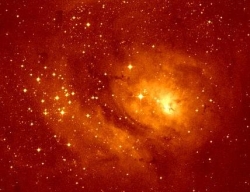 |
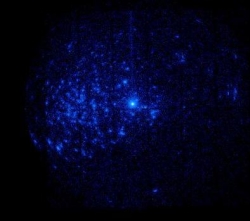 |
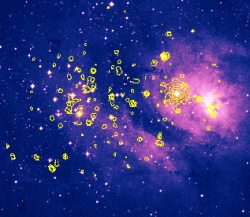 |
Image of the NGC 6530 region in white light |
in X-rays |
superposition of the 2 (the sources seldom coincide). |
X-rays and gamma-rays are far more energetic than the light we see with our eyes: therefore they enable us to look at the most violent phenomena of the Universe. The infrared (IR), less energetic, permits to detect cold objects and to study in detail the gaz located between the stars. These radiations, invisible to the human eyes, were discovered at the end of the 19th century, but started being studied in astronomy only in the middle of the 20th century. They are indeed absorbed by the Earth's atmosphere, so one needs rockets or satellites to observe them. Presently GAPHE actively participate in the exploitation of data obtained by most of the best performing European satellites: XMM-Newton, INTEGRAL and Herschel. To learn more, look at our research pages.
Pretty pictures and serendipitous discoveries
With their researches, the GAPHE group aims at unveiling the mysteries of massive stars, all the way from the infrared to the gamma-rays. Massive stars are really extreme stars. To convince you, here are a few examples of particularly spectacular results that were at the origin of several international press releases.
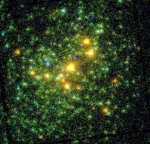 |
The NGC6231 cluster, as observed with XMM-Newton:
Similar picture for NGC6383 - see also the picture of the IC1805 cluster. |
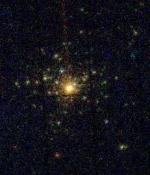 |
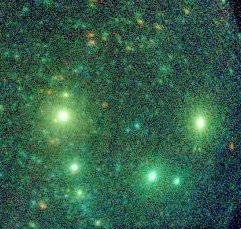 |
Similar picture for the Cyg OB2 cluster, which contains some of the massive stars that were first detected in X-rays - amongst them, there are exceptional colliding wind systems (e.g. star 9, monitored by XMM and Swift, appears as a true celestial Rosetta stone).
Similar picture for Carina Complex, one of the richest regions of the sky. |
 |
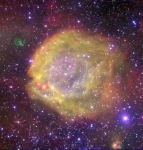 |
Massive objects BAT99-2, BAT99-49 and AB-7 have WR20a is an extraordinary binary system composed of two stars weighing over 80 solar masses each: these are the most massive known so far. GAPHE has studied this region in the X-ray domain... |
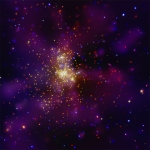 |
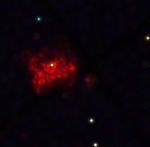 |
Massive stars eject powerful winds that many collide. Some collisions between the stellar winds emit a super-energetic radiation, e.g. Eta Carinae that was studied in the gamma-rays with INTEGRAL. |
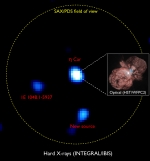 |
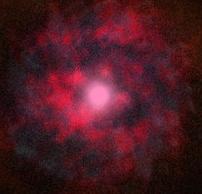 |
Note that the structure of these stellar winds was found to be highly fragmented.
It should also be noted that massive binaries appear |
 |
 |
These stellar winds may also carve "bubbles"
One must remain careful, though, because |
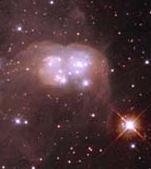 |
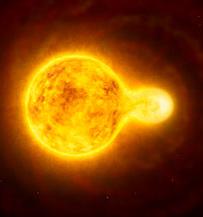 |
Massive stars can also present peculiarities. HR5171, stellar system caught during an interaction between its components, has a primary star 1300 times bigger than the Sun!
Ksi 1 CMa presents pulsations at high energies, a new type of X-ray variations! |
 |
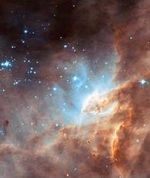 |
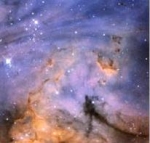 |
Some further reading...
Some articles popularizing our research are also available, but only in French (see French version of this page).



